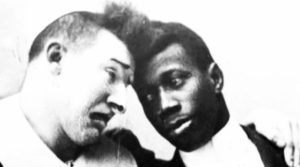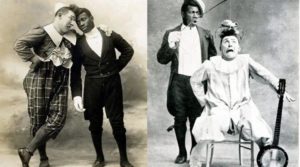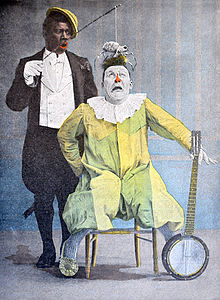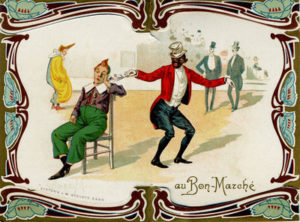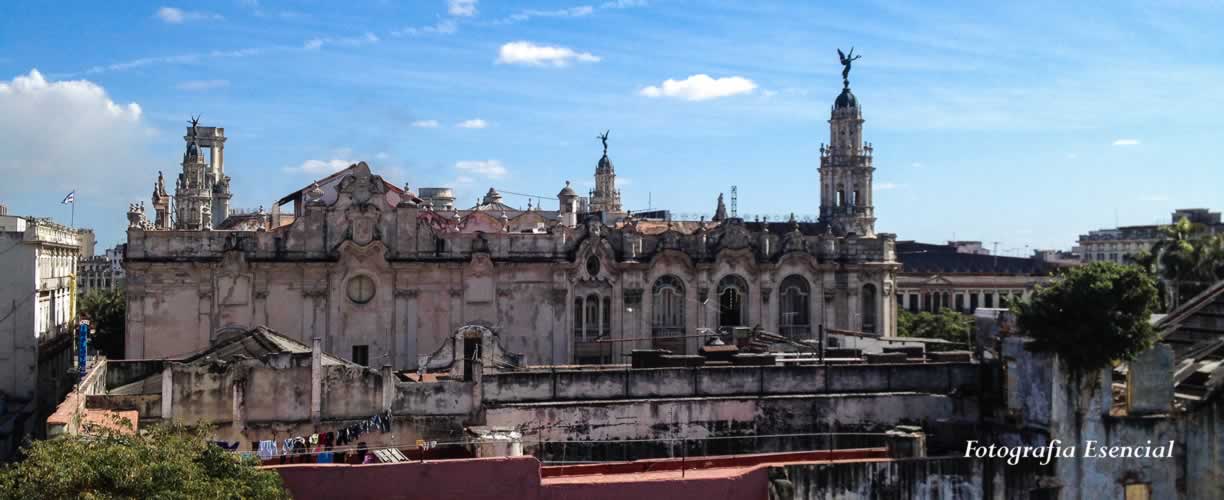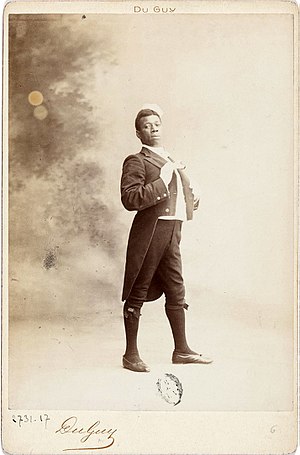 PERSONAJES CUBANOS FAMOSOS: DE SER UN ESCLAVO A SER EL DISTINGUIDO “MONSIEUR CHOCOLAT”.
PERSONAJES CUBANOS FAMOSOS: DE SER UN ESCLAVO A SER EL DISTINGUIDO “MONSIEUR CHOCOLAT”.
Rafael Padilla fue el verdadero nombre del esclavo cubano nacido a mediados de 1868 en la Habana y que con el nombre artistico de Monsieur Chocolat se distinguió considerablemente en los escenarios franceses.
Con los años, se transformó en el primer payaso cubano negro que triunfára en París, en los finales del siglo XIX y comienzos del XX.
Rafael desde muy pequeño, fue separado de sus progenitores, esclavos en una plantación.
Signado por su condición, pasó los días en la calle hasta que un comerciante español, Patricio Castaño Capetillo, lo compró por 18 onzas de oro y lo llevó hasta el País Vasco.
Aunque en Cuba la esclavitud se había abolido en 1837, el niño con 11 años sirvió como criado a Doña Rosaura Capetillo, hasta que escapó para dejar de servir a otros.
Así, libre por primera vez en su vida, llegó a una ciudad próxima a Bilbao, donde sobrevivió trabajando en lo que se presentara. De ahí que su inicial actuación en varios cafés como bailarín le ofreció la oportunidad de cambiar de vida.
SE CONVIERTE EN MONSIEUR CHOCOLAT.
Con 16 años de edad, tuvo la suerte de encontrarse con el payaso inglés, Tony Grice, que formaba parte de la Compañía Ecuestre del Circo Alegría.
En 1886, pisó París por primera vez junto a Grice y a otro payaso portugués llamado Tonyto; fue allí cuando los parisinos lo vieron sobre el escenario y nació el pseudónimo por el cual todos le conocerían después: Monsieur Chocolat.
Tres años después, él y el payaso Geroges Foottit fueron pioneros en la creación de un dúo entre un payaso “Carablanca” y un payaso “Augusto” negro.
Chocolat y Footit alcanzaron un éxito inusual -por espacio de dos décadas- e inspiraron a otros grandes artistas de la época, como Toulouse Lautrec -que retrató a Chocolat- o a los hermanos Lumière, participando en varias de sus primeras películas.
En 1910 se separaron y, si bien el momento devino difícil sobrevivencia artística, fue peor para Monsieur Chocolat, ya que el racismo de la época lo apartó de muchos escenarios; comenzó su decadencia y terminó por abandonar el mundo del espectáculo.
Chocolat siguió trabajando para los niños hospitalizados, a los que no dejó de visitar nunca para hacerlos sonreír.
Conoció la gloria, pero murió solo, y su recuerdo quedó enterrado en una fosa común de Burdeos en November 4, 1917.
La memoria de Chocolat solo fue mantenida por la acción de algunos investigadores, contados libros y uno que otro blog, pero el impacto del cine ha logrado avivar su recuerdo.
Siempre que se repase la historia de la actuación en Cuba, hay que dedicarle una página de gloria a aquel hombre que, a pesar de llevar en su alma las tristezas que acompañaron su condición de negro y descendiente de esclavo, siempre tuvo una sonrisa y mucha gracia para regalarlas a los espectadores, especialmente a los niños.
 FAMOUS CUBAN CHARACTERS: FROM BEING A SLAVE TO BE THE DISTINGUISHED “MONSIEUR CHOCOLAT”.
FAMOUS CUBAN CHARACTERS: FROM BEING A SLAVE TO BE THE DISTINGUISHED “MONSIEUR CHOCOLAT”.
Rafael Padilla was the real name of the Cuban slave born in 1868 in Havana and who with the artistic name of Monsieur Chocolat distinguished himself considerably on French stages.
Over the years, he became the first black Cuban clown to triumph in Paris, in the late nineteenth and early twentieth centuries.
Rafael from an early age was separated from his parents, slaves in a plantation.
Signed by his condition, he spent the days in the street until a Spanish merchant, Patricio Castaño Capetillo, bought it for 18 ounces of gold and took it to the Basque Country.
Although slavery had been abolished in Cuba in 1837, the 11-year-old boy served as a servant to Doña Rosaura Capetillo, until he escaped to stop serving others.
Thus, free for the first time in his life, he arrived in a city near Bilbao, where he survived by working on what was presented. Hence, his initial performance in several cafés as a dancer offered him the opportunity to change his life.
BECOMES MONSIEUR CHOCOLAT.
With 16 years of age, he was lucky to meet the English clown, Tony Grice, who was part of the Equestrian Company of the Alegría Circus.
In 1886, he set foot in Paris for the first time with Grice and another Portuguese clown named Tonyto; It was there when the Parisians saw him on stage and the pseudonym was born by which everyone would meet him later: Monsieur Chocolat.
Three years later, he and the clown Georges Foottit were pioneers in the creation of a duo between a “Carablanca” clown and a black “Augusto” clown.
Chocolat and Foottit achieved unusual success – for two decades – and inspired other great artists of the time, such as Toulouse Lautrec – who portrayed Chocolat – or the Lumière brothers, participating in several of his first films.
In 1910 they separated and, although the moment became difficult artistic survival, it was worse for Monsieur Chocolat, since the racism of the time separated him from many stages; He began his decline and ended up leaving the entertainment world.
Chocolat continued to work for hospitalized children, whom he never stopped visiting to make them smile.
He knew the glory but died alone, and his memory was buried in a mass grave in Bordeaux, France on November 4, 1917.
Chocolat’s memory was only maintained by the action of some researchers, counted books and the occasional blog, but the impact of cinema has managed to enliven his memory.
Whenever the history of the performance in Cuba is reviewed, one must dedicate a page of glory to that man who, despite carrying in his soul the sorrows that accompanied his condition of black and descendant of a slave, always had a smile and much Grace to give to spectators, especially children.
Agencies/ Rhc/ Guadalupe Yaujar/ Maria Candela/ Internet Photos/ Arnoldo Varona/ www.TheCubanHistory.com
THE CUBAN HISTORY, HOLLYWOOD.



